🛠️ Assembling with Raspberry Pi
In this section, you'll learn how to install a Raspberry Pi (5) into the M1 enclosure—perfect for remote, headless deployments in rugged environments.
But before diving in, make sure you’ve got all the gear ready!
✅ What You’ll Need
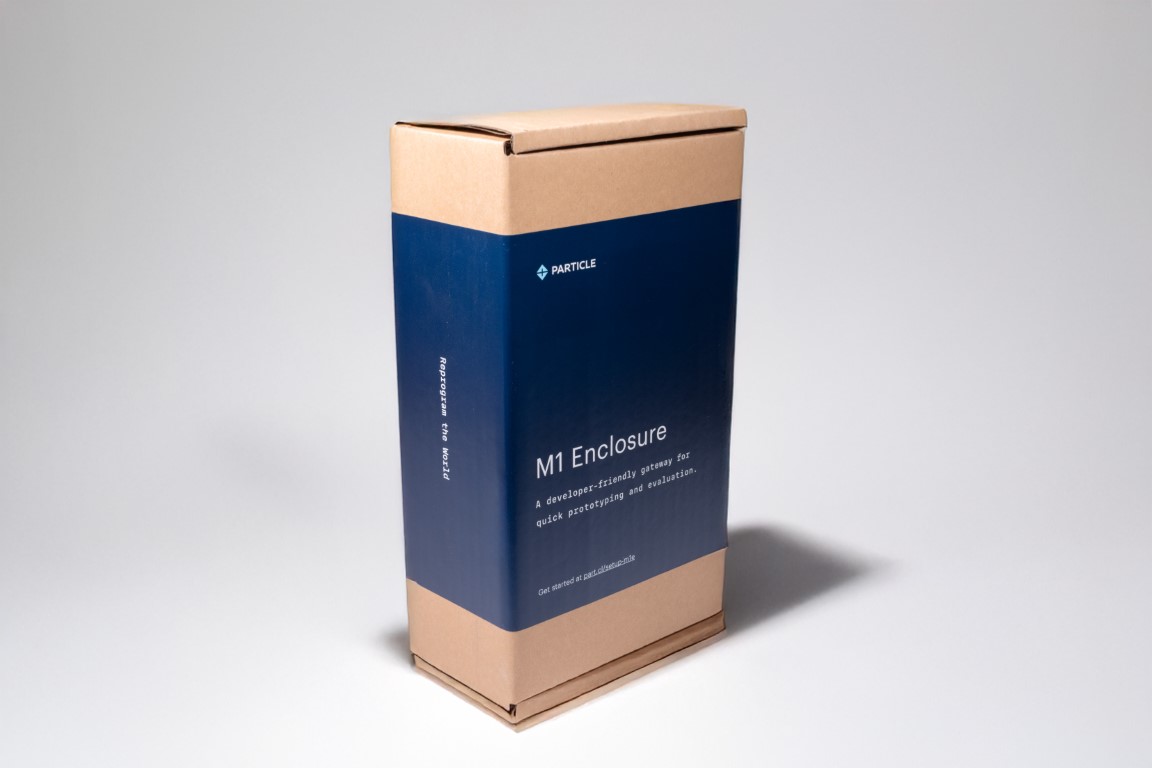
- M1 Enclosure Kit
- Raspberry Pi 5 (or earlier version with the same mounting holes)
- Phillips head screwdriver
- Flat head screwdriver (optional)
Setup
Accessing the M1 carrier board
We’ll start by removing the top lid of the enclosure to reach the carrier board.

The lid isn’t fastened with screws—just lift it off.
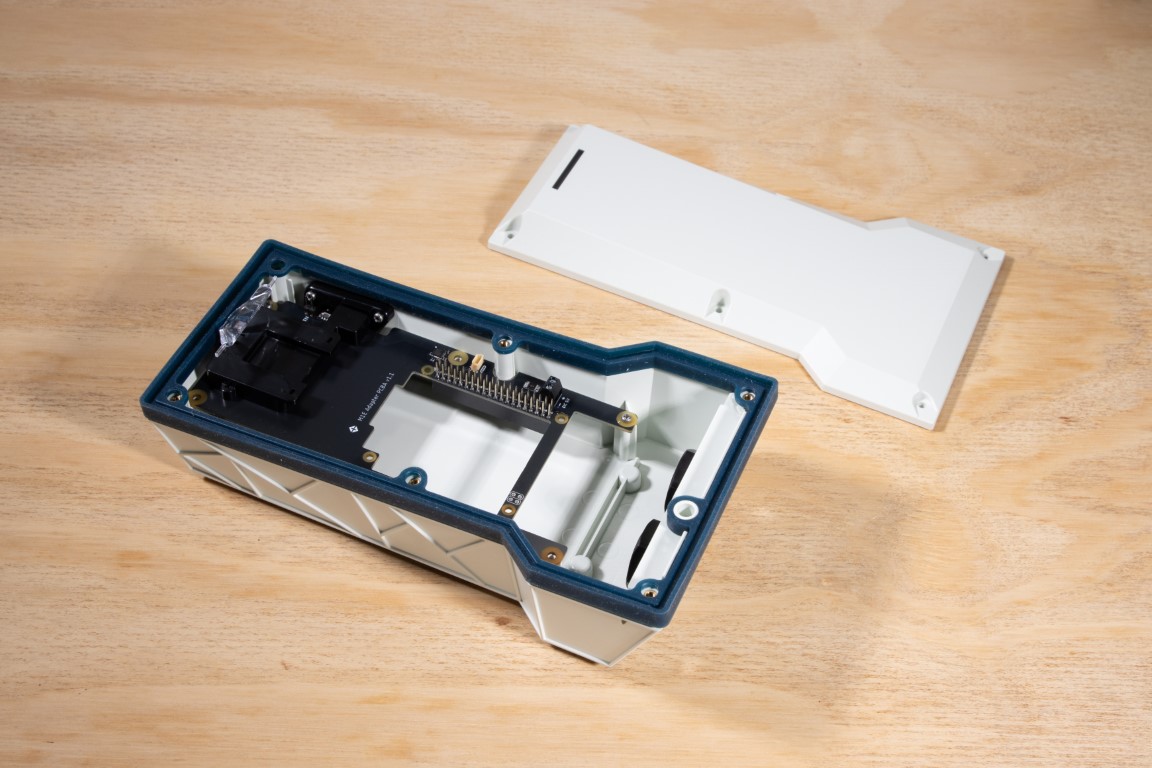
Use a Phillips head screwdriver to remove the three screws holding the carrier board in place. Don’t worry about the other three—you’ll find them in your kit. We pre-installed just three to make your first removal easier.
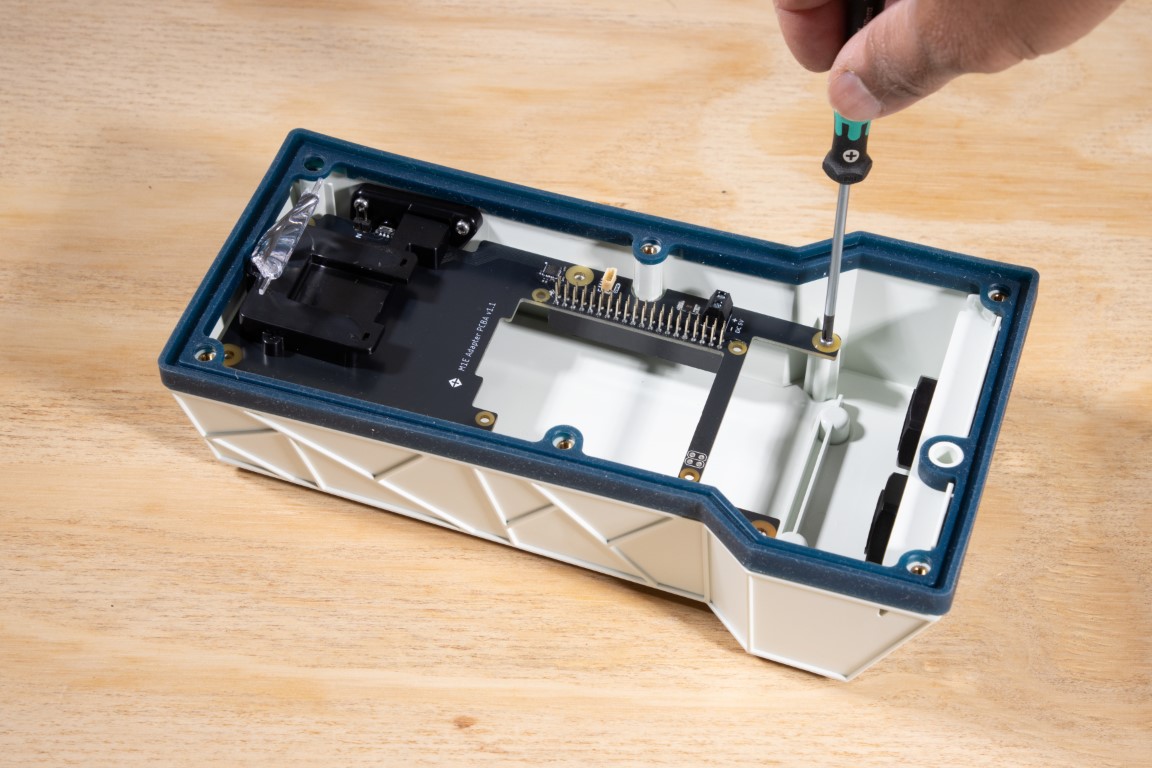
Gently lift up the carrier board and remove it from the enclosure.
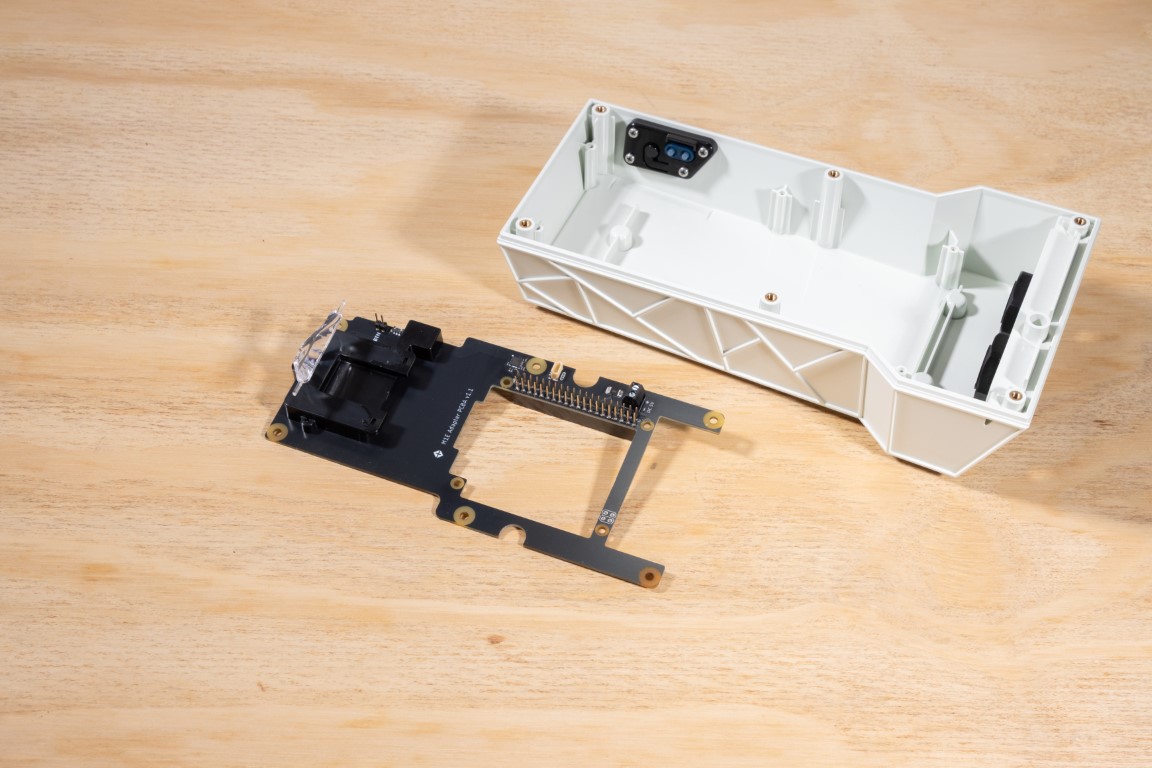
Want to explore the carrier board in detail? We’ve documented that here.
Preparing the Raspberry Pi
Now let’s prep the Raspberry Pi for mounting. You’ll need the Pi (we’re using RPi 5 here) and the nylon screws and threaded spacers from the kit.
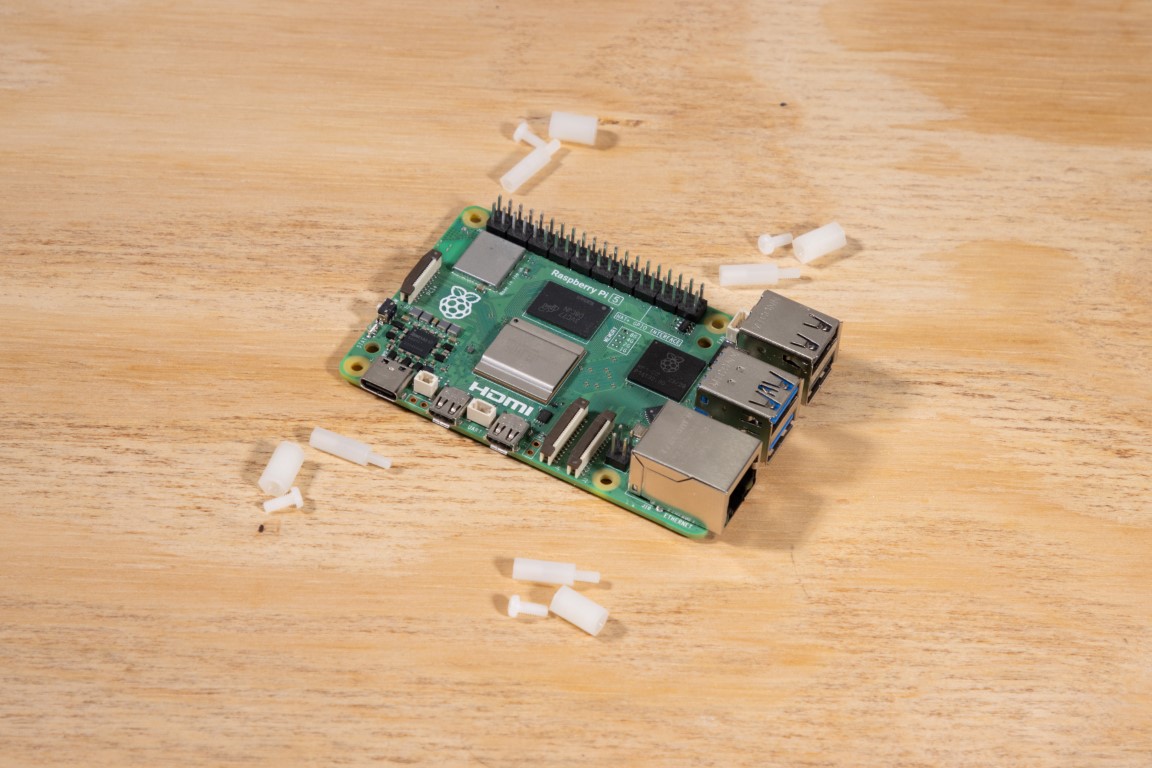
Install the four nylon spacers into the mounting holes on the Pi.

Once installed, it should look something like this.
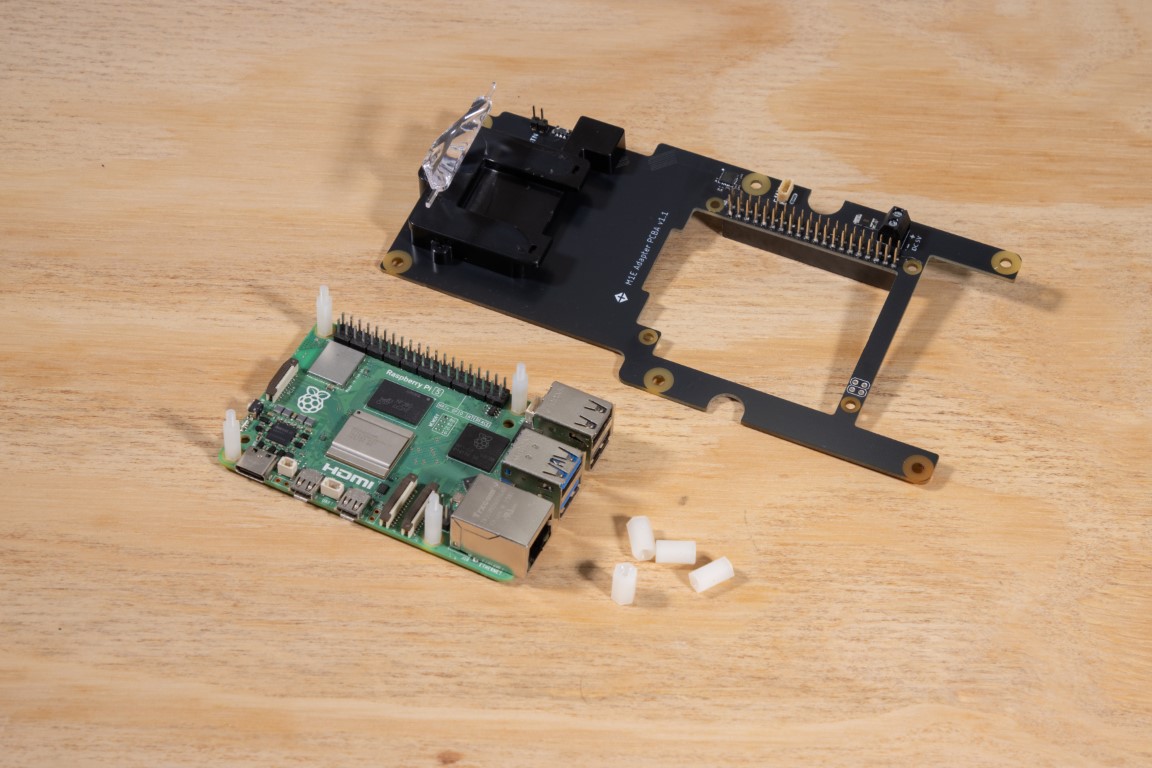
Installing the Raspberry Pi onto the Carrier Board
Line up the Pi with the carrier board.
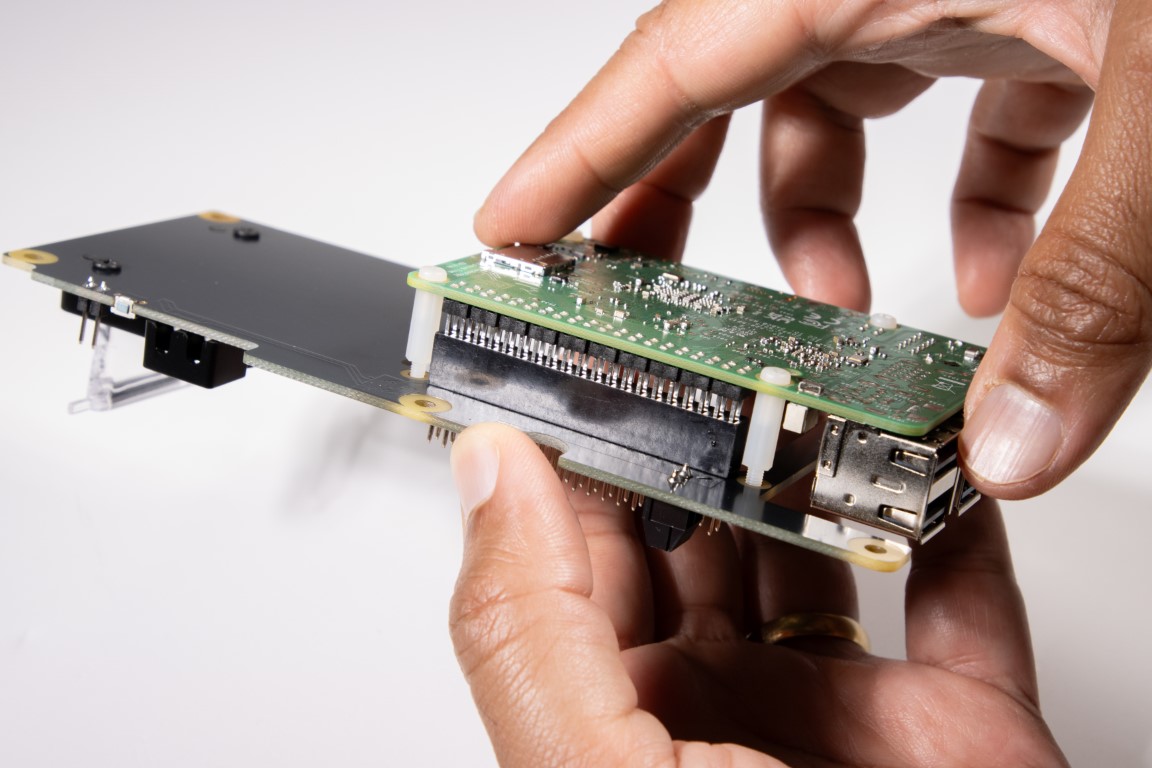
Carefully align the 40-pin header with the socket on the carrier board. Also make sure the spacers fit into the holes.
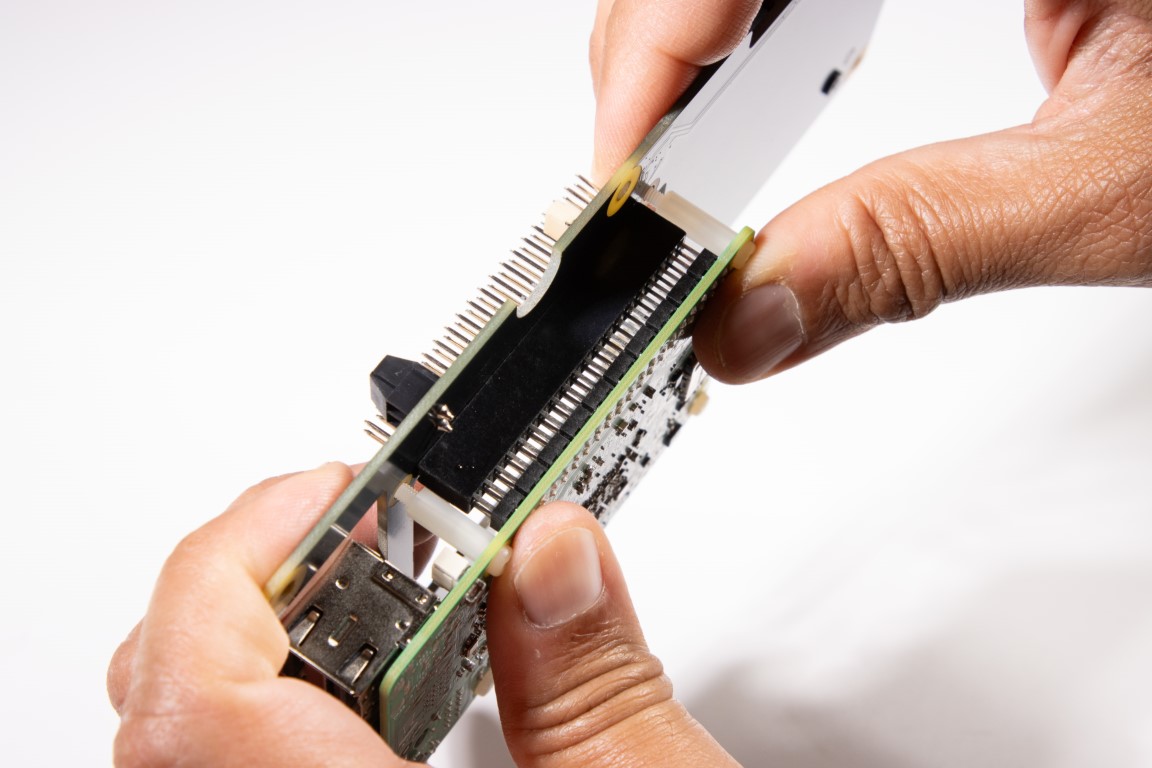
Gently press down on both sides. You should see a small 1mm gap between the connectors—this is intentional. Don’t try to push it all the way in.
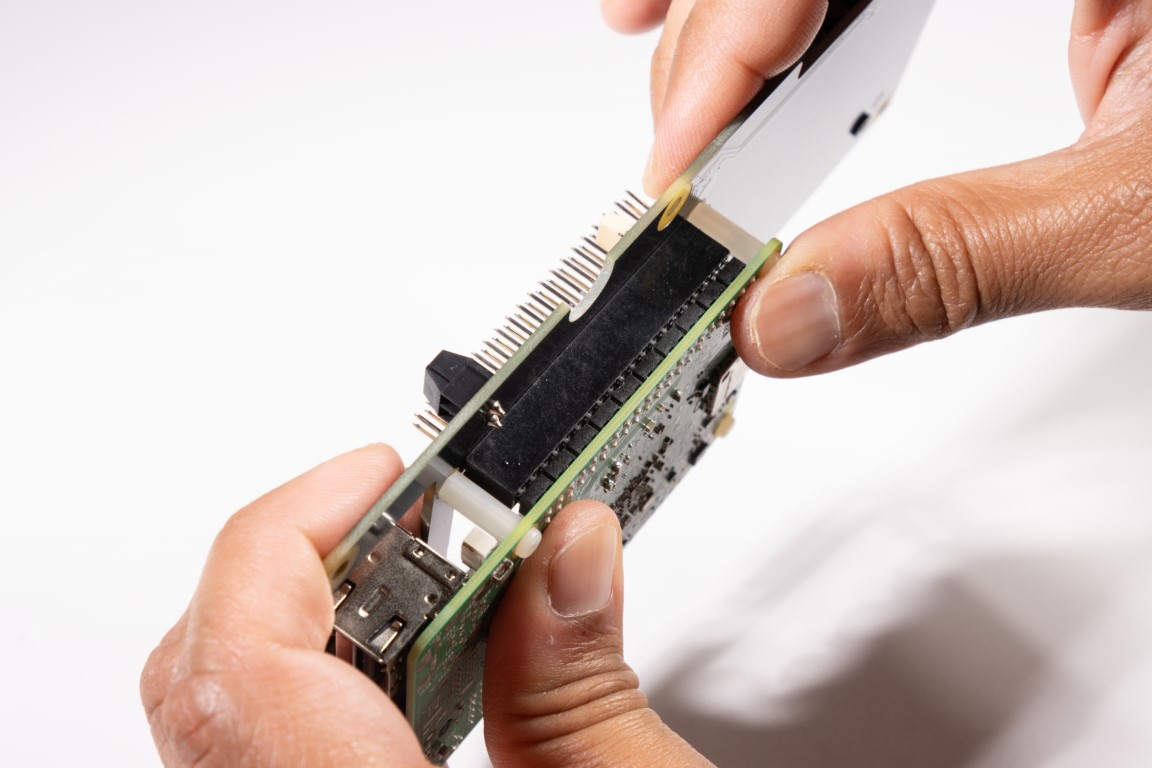
Use the provided screws to secure the Pi to the board.
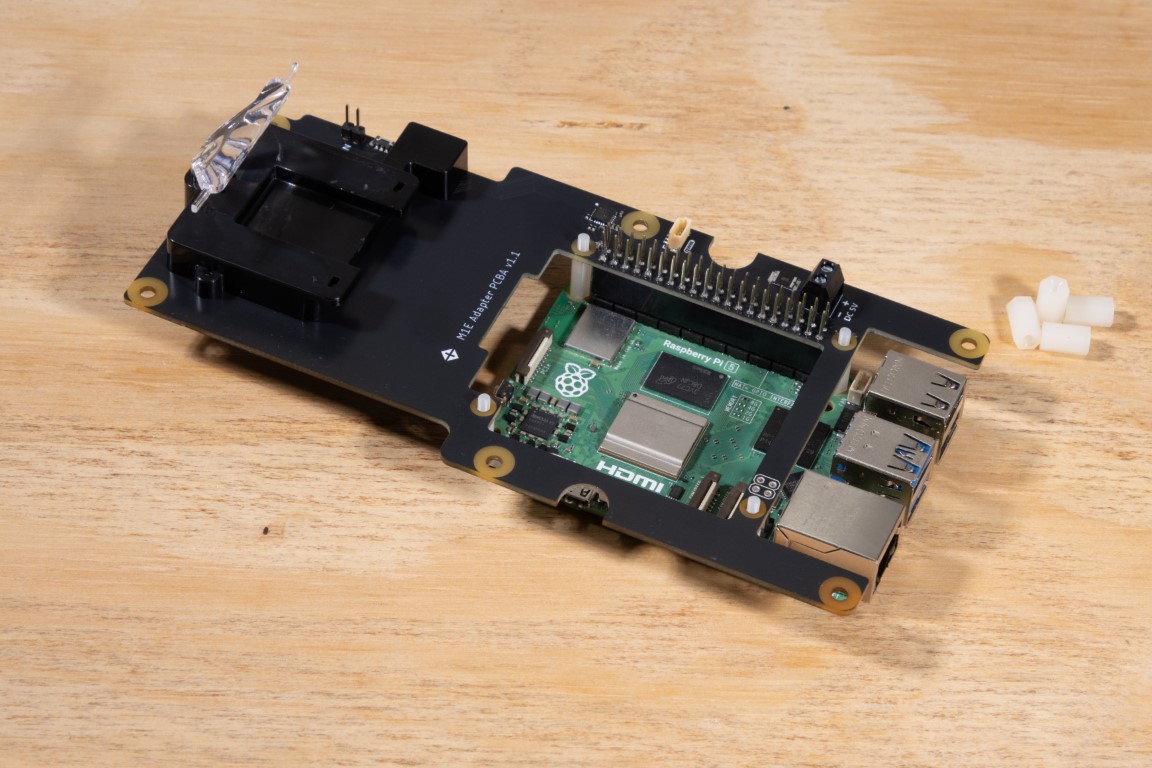
This setup leaves room for HATs or other accessories to be installed later.
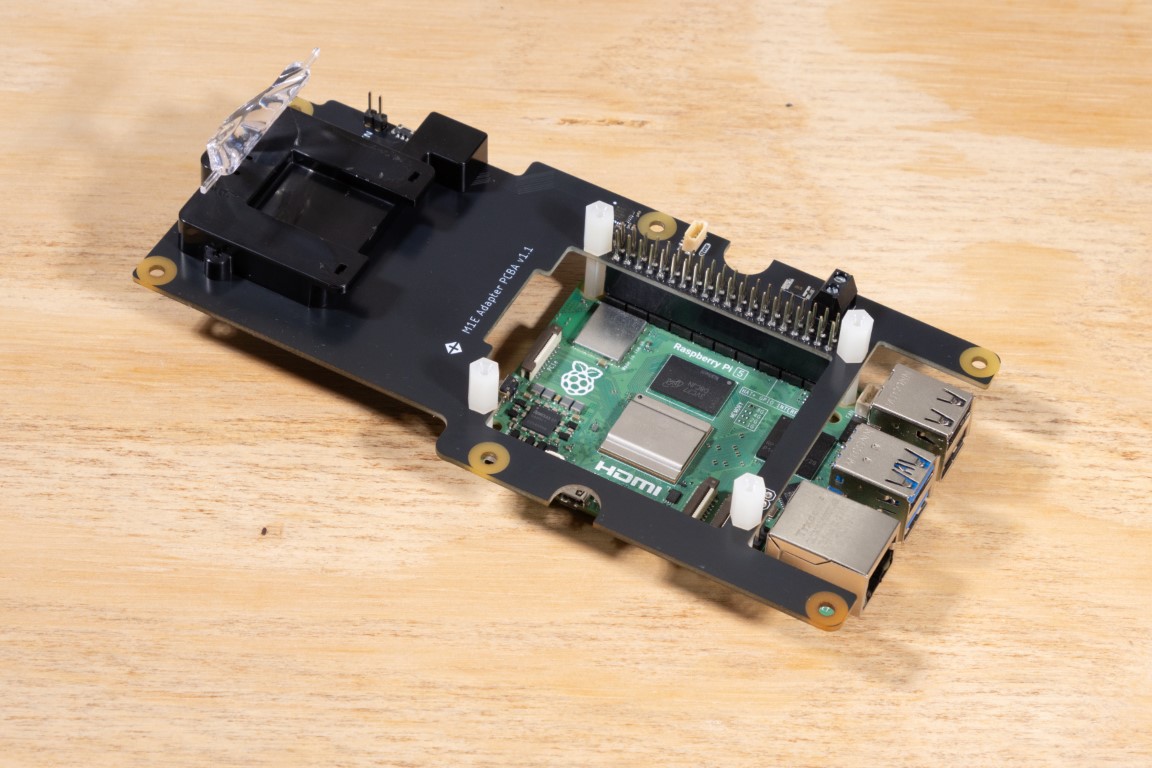
Installing the USB-C Adapter Cable
Your kit comes with a custom angled USB-C cable that routes neatly through the enclosure.
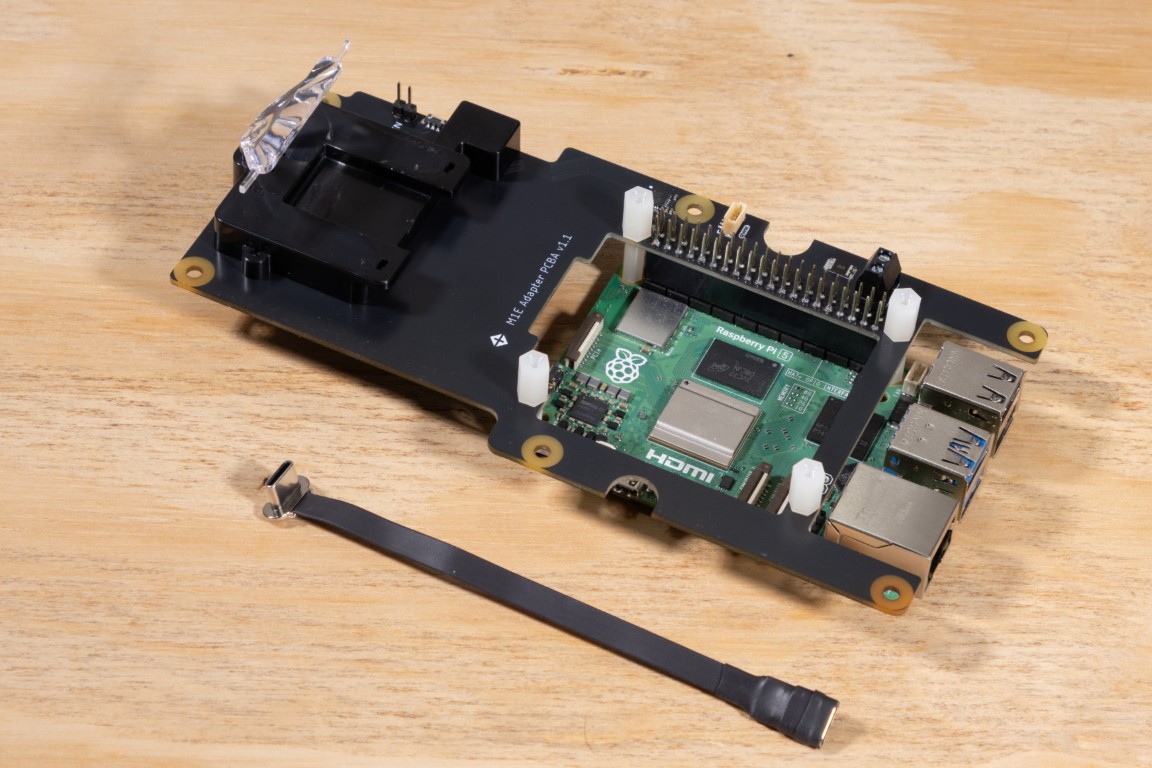
Even if you don’t plan to use USB-C right away, we recommend plugging it in now. You won’t be able to access the port once the board is mounted.

Now place the assembled carrier board back into the enclosure.
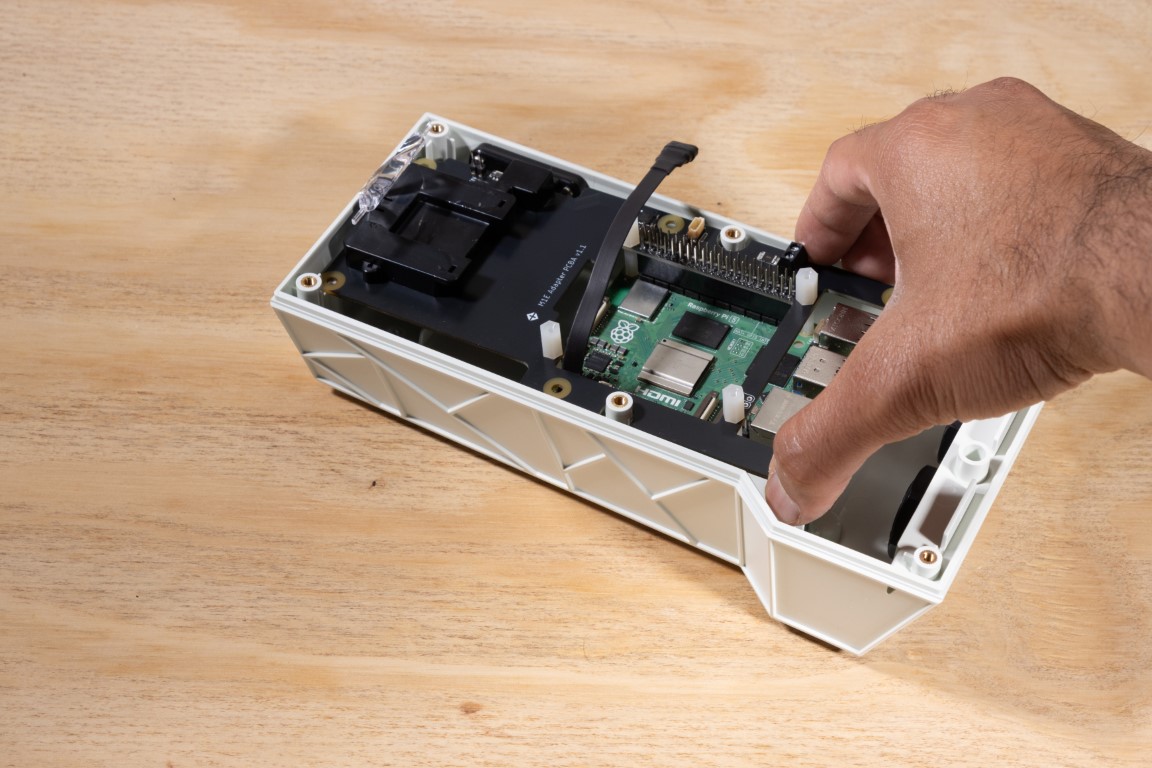
Secure it with all six self-tapping screws—three from before and three new ones from the kit.

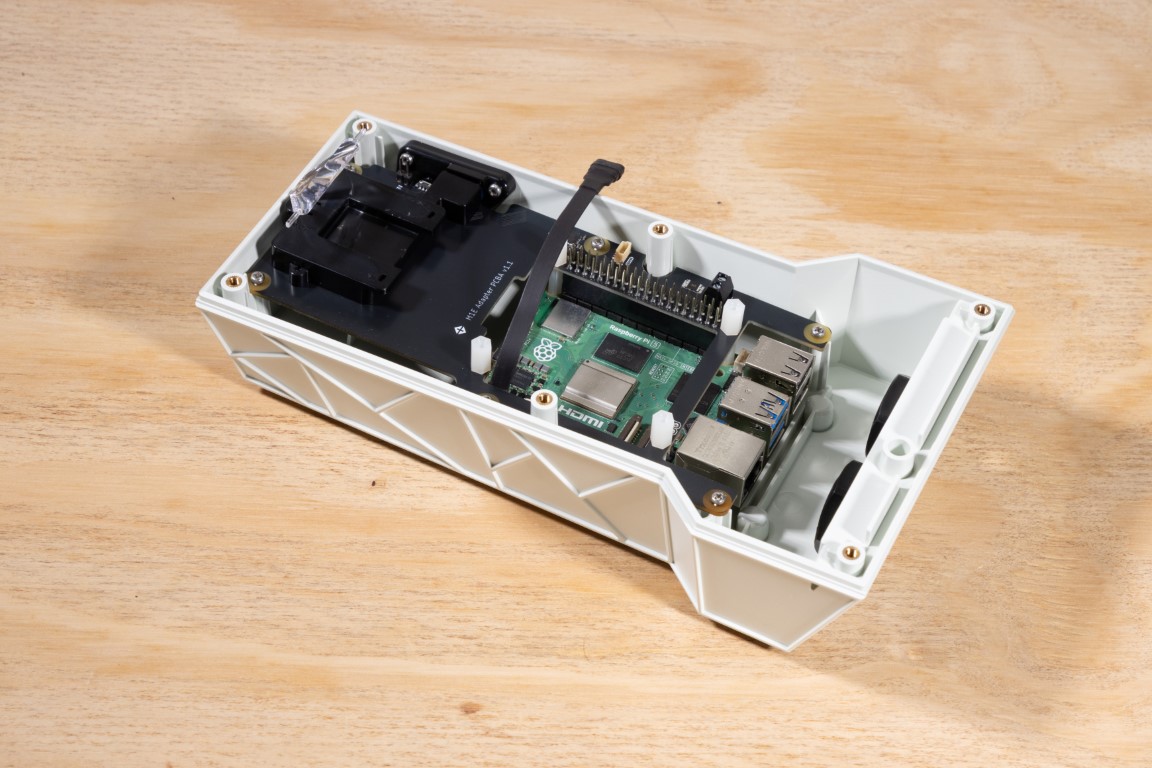
Installing the Cable Glands
To bring in power or data cables, use the M20 cable glands. The enclosure has two sealed M20 holes and two for optional SMA connectors (antenna ports).
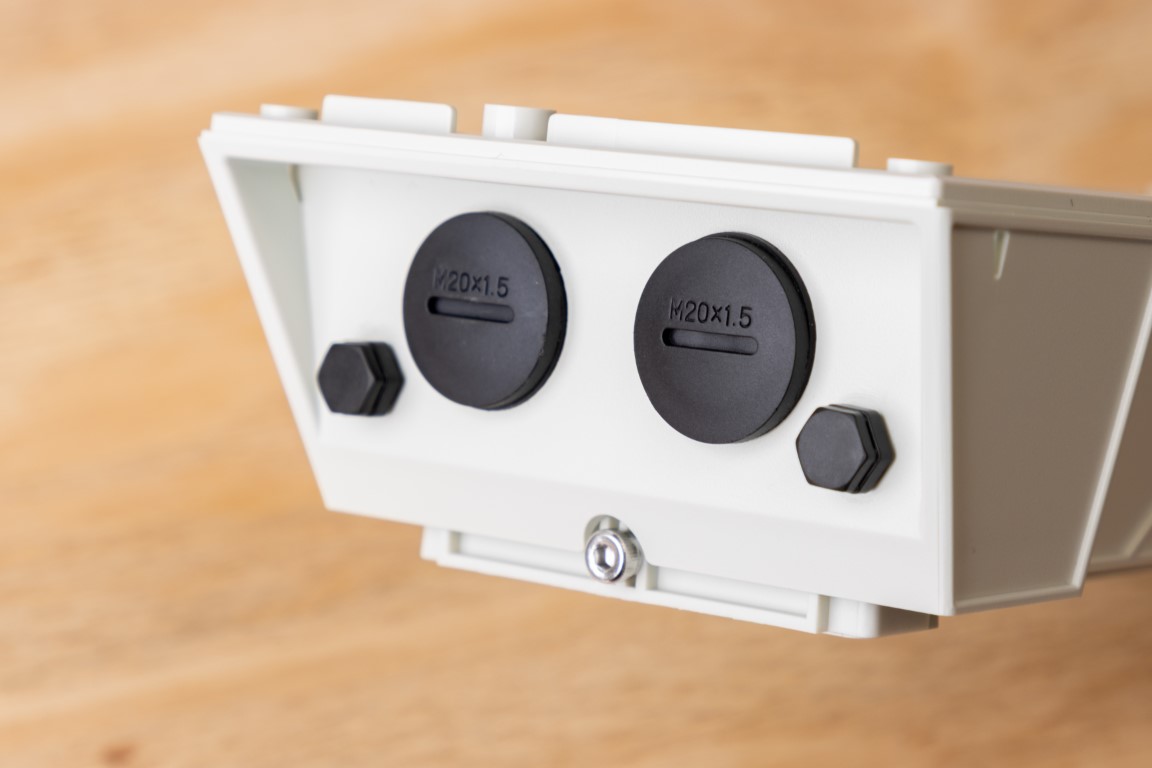
Planning to bring out only the USB cable? Just remove one M20 cap and install the gland from the kit.
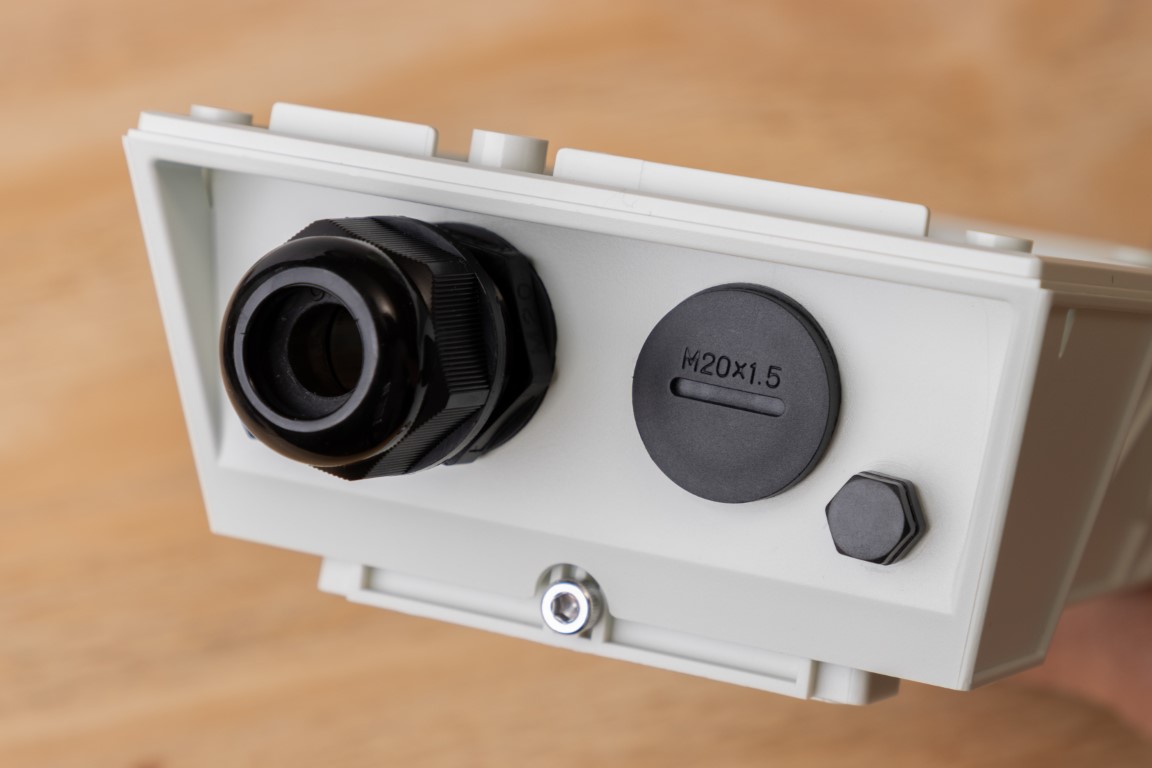
To ensure an IP67 seal, tighten to about 7 kgf-cm.
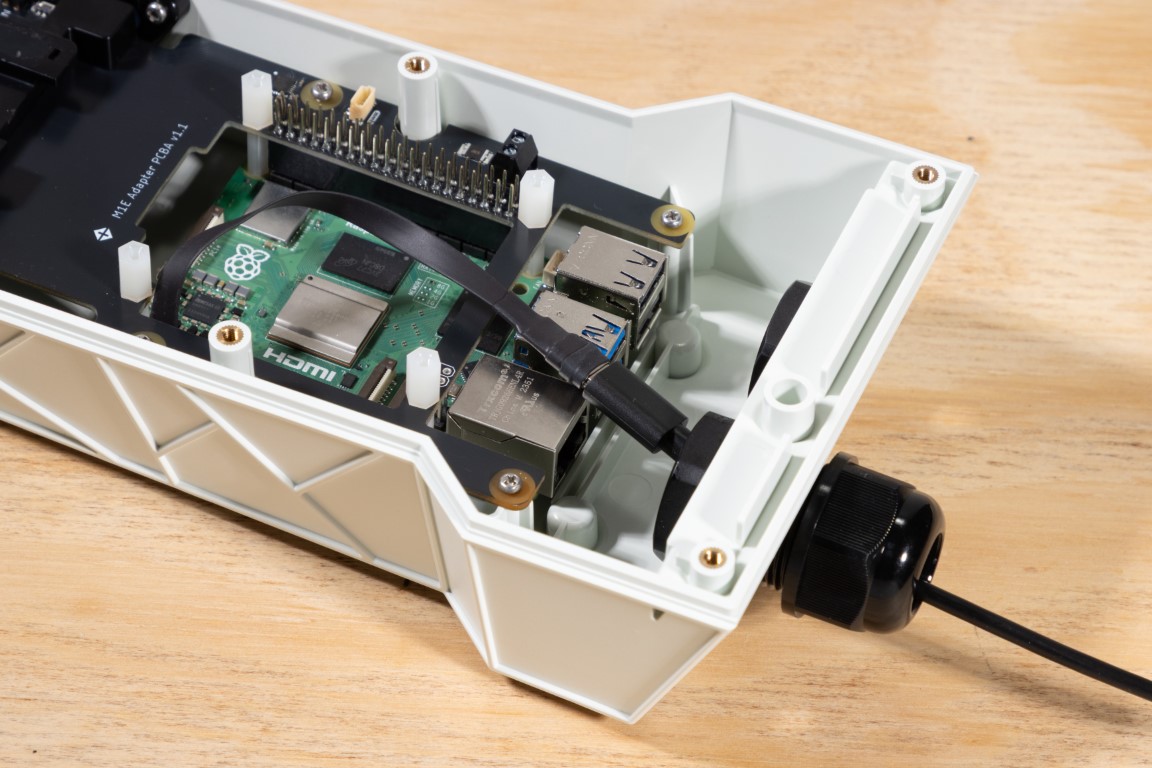
Thread the USB cable through the gland.
Install the Silicone Gasket

Place the gasket around the edge of the lid groove. Make sure it sits flat.
Close the Lid

Secure the lid using the six M3 screws and washers. Use the smaller Allen key included in the kit.
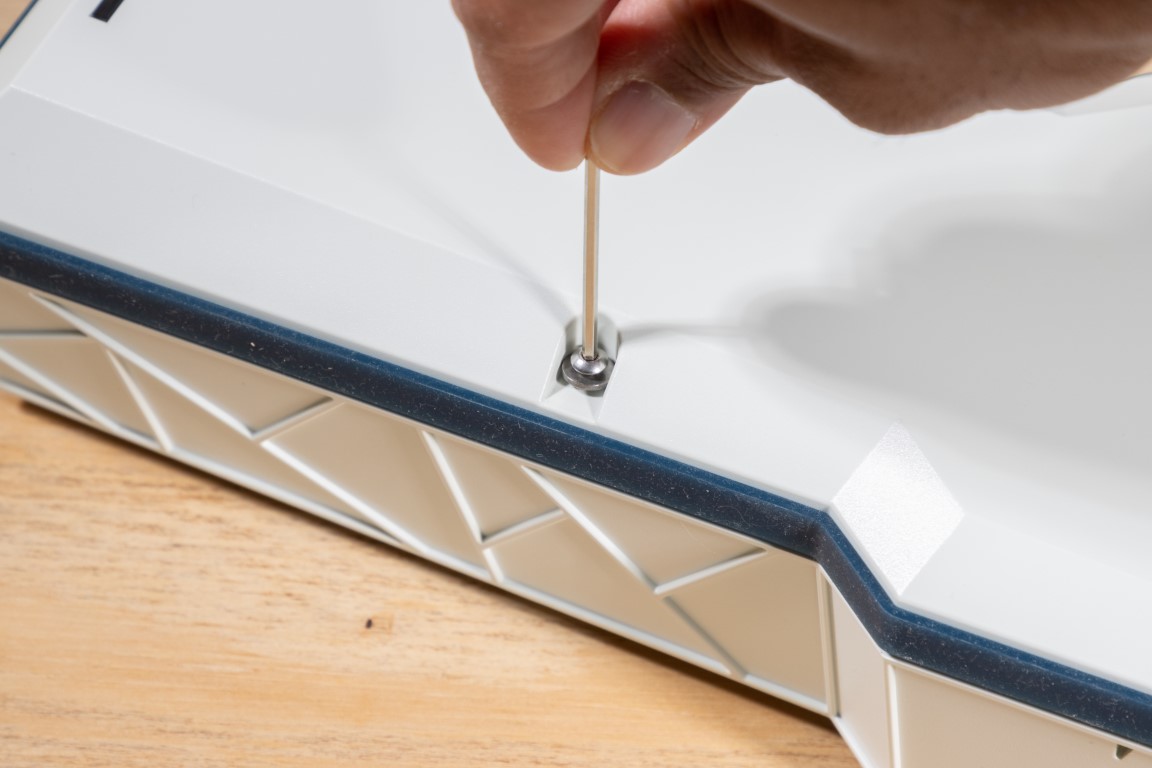
To maintain the IP67 rating, tighten screws to about 7.5 kgf-cm.
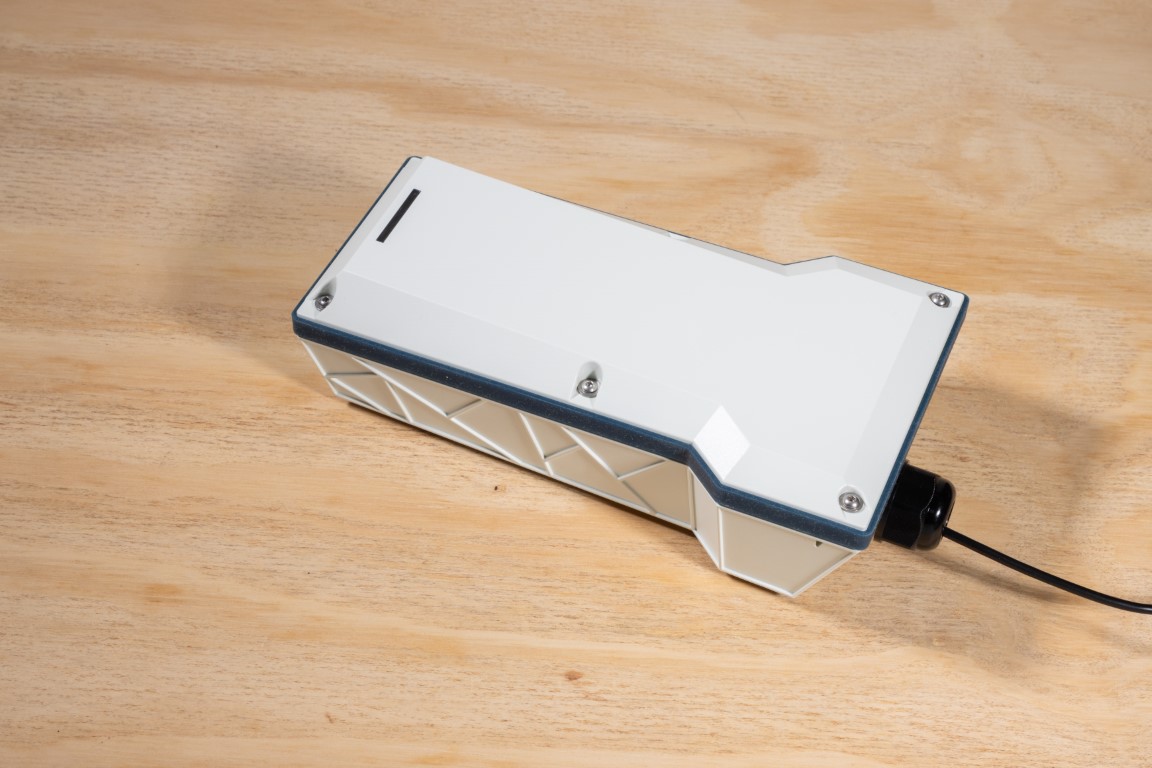
All done! Your Raspberry Pi is now rugged and ready. 🌦️
⚡ Powering Your Device
There are several ways to supply power to your Raspberry Pi inside the M1 enclosure. The most straightforward is via USB-C, as we covered earlier—but that’s not your only option.
1. 5V Terminal Block
The M1 carrier board breaks out the Pi’s 5V and GND lines to a convenient 2-pin terminal block.
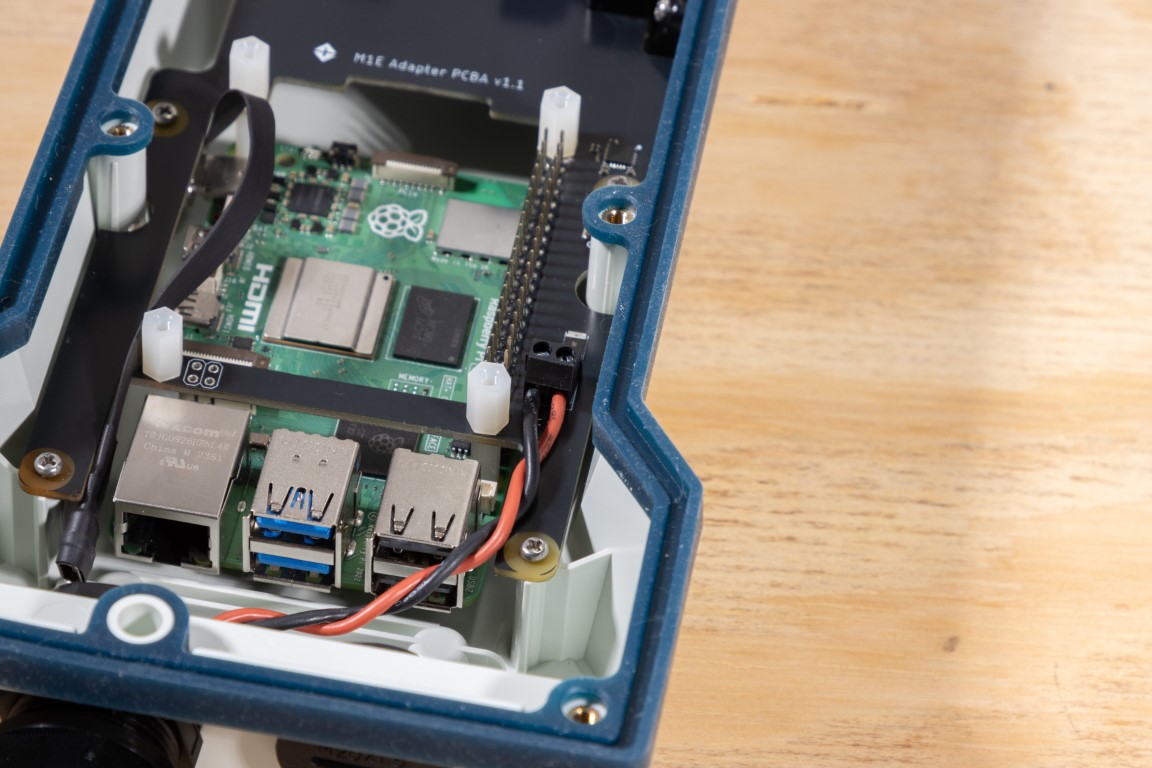
Use it to bring power using plain wires. Make sure your power source provides 5V at 5 Amps, which is the recommended spec for the RPi 5.
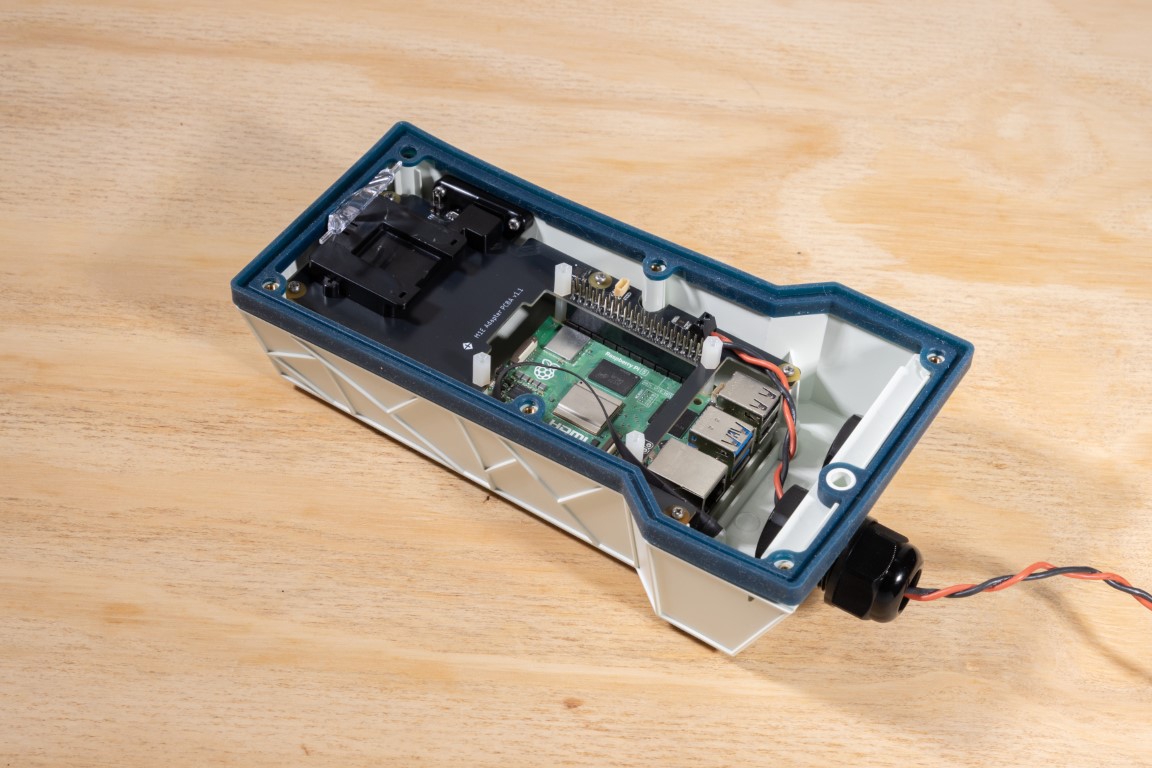
You can route the cable through a cable gland.
💡 Pro tip: If your wire is too thin for the gland, wrap it with butyl tape to make a tighter seal.
2. Power Over Ethernet (PoE)
The carrier board includes optional pads for a 4-pin PoE header—just solder it on.
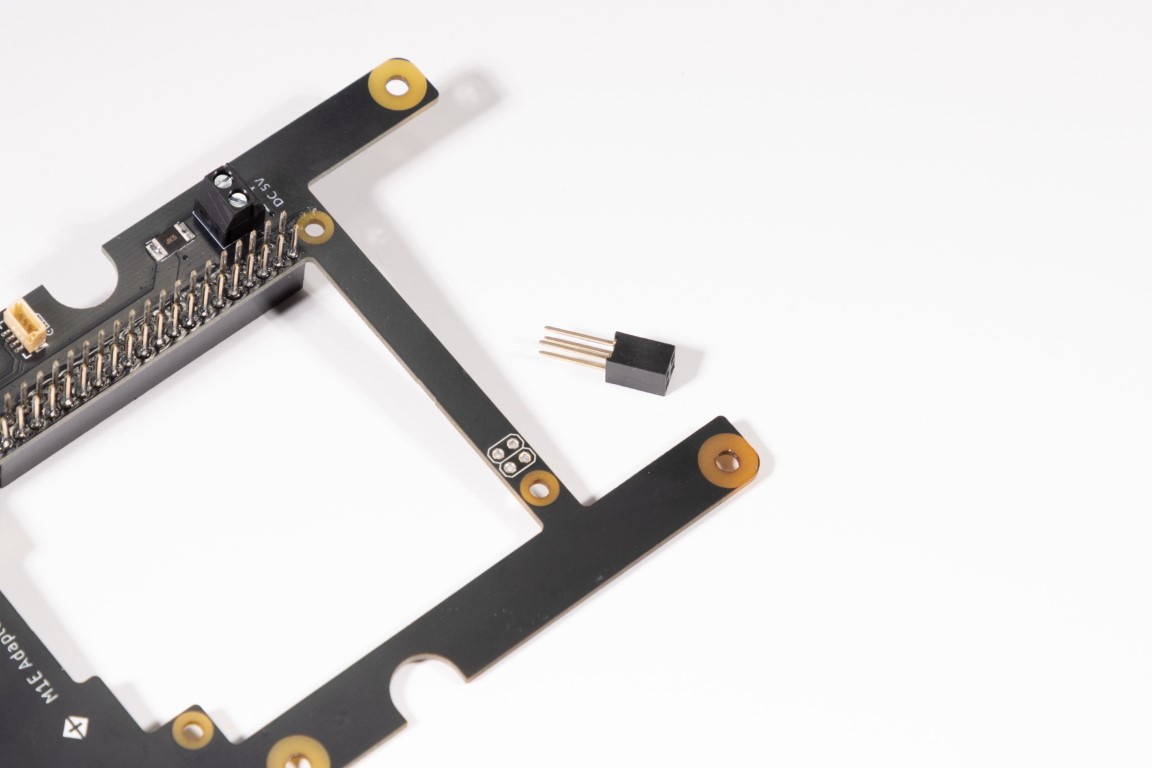
This lets you use a PoE HAT to deliver both power and ethernet through a single cable.
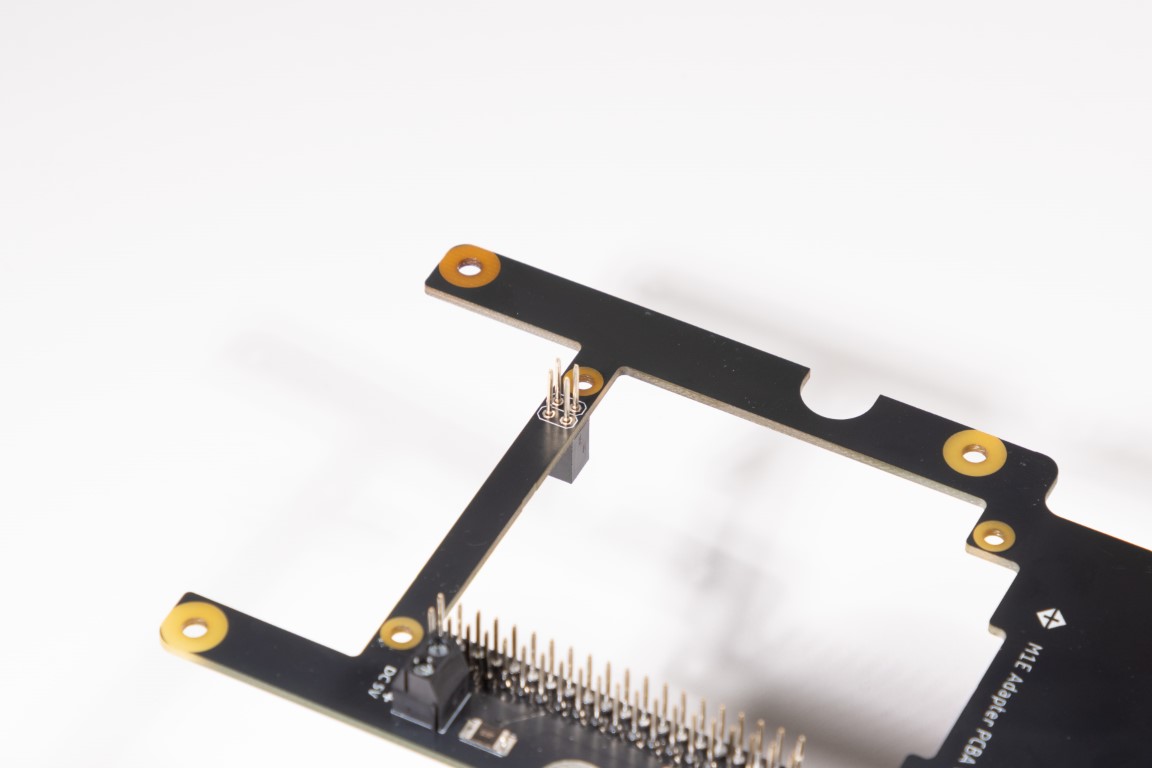
Make sure the header is soldered straight—this makes Pi installation easier.
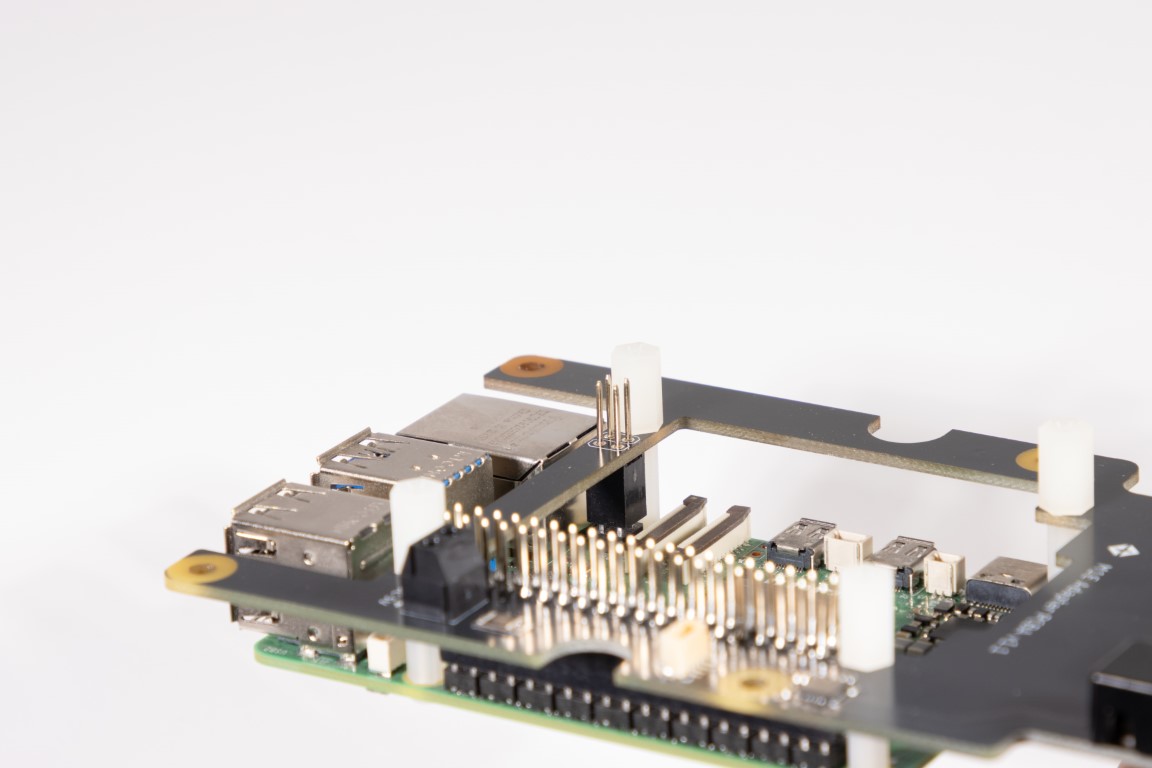
Install your PoE HAT and plug in the Pi like usual.
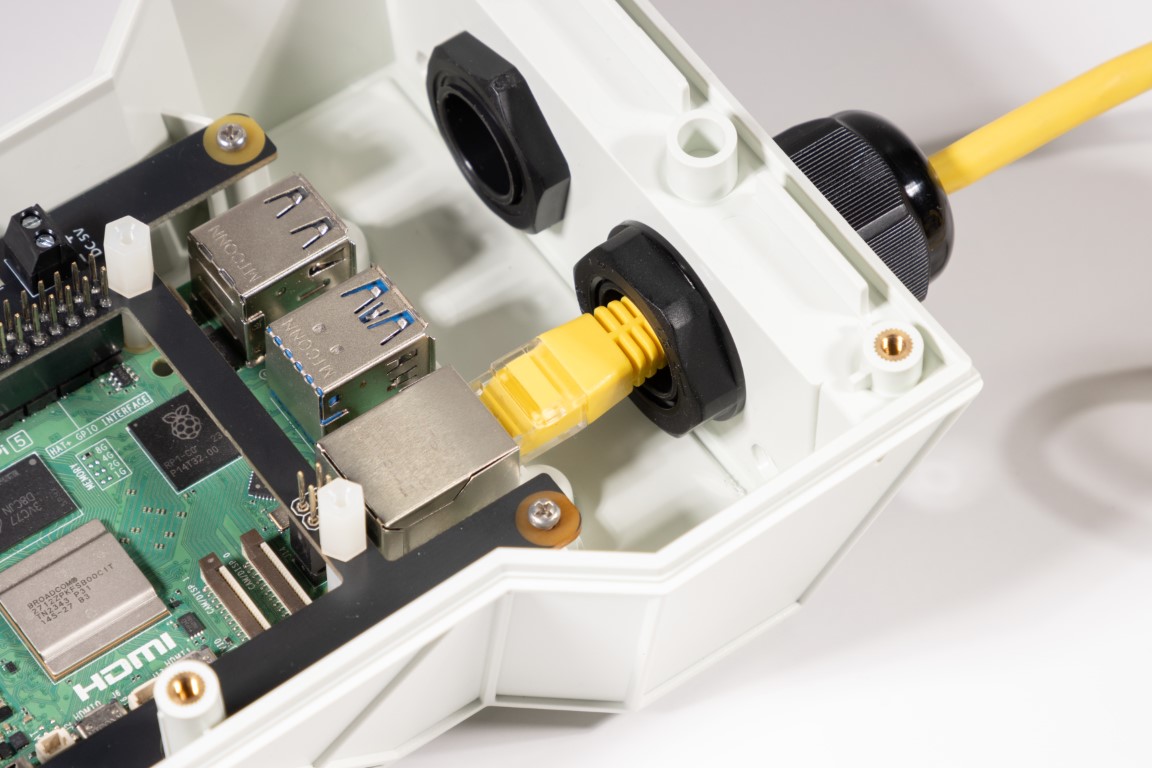
Feed the ethernet cable in through one of the M20 glands.
Note: Bulky RJ45 connectors might be a tight fit.
3. Dedicated Power HATs
There are many off-the-shelf power HATs that can step down 12V or 24V to 5V for the Pi. These are useful for automotive, solar, or industrial deployments.
✨ Enabling Additional Hardware Features
The M1 enclosure has a few extra tricks built-in to help you build a complete, professional-grade product.
1. Using the Onboard RGB LEDs
There are three user-programmable RGB LEDs:
- One on the top (main status LED)
- Two on the side (near the external button)
These are controlled by an onboard ADP8866 I²C LED driver, connected to pins 3 and 5 on the Pi's header (standard I²C).
Its default I²C address is 0x27.

Heads-up: This shares the same I²C bus as the Qwiic connector, so avoid address conflicts.
🔧 A control library for the ADP8866 will be available soon on our GitHub!
2. Connecting the External Button
The M1 enclosure includes a user-accessible push button on the exterior. You can hook it up in parallel with the Pi's power button header to enable ON/OFF or suspend actions.
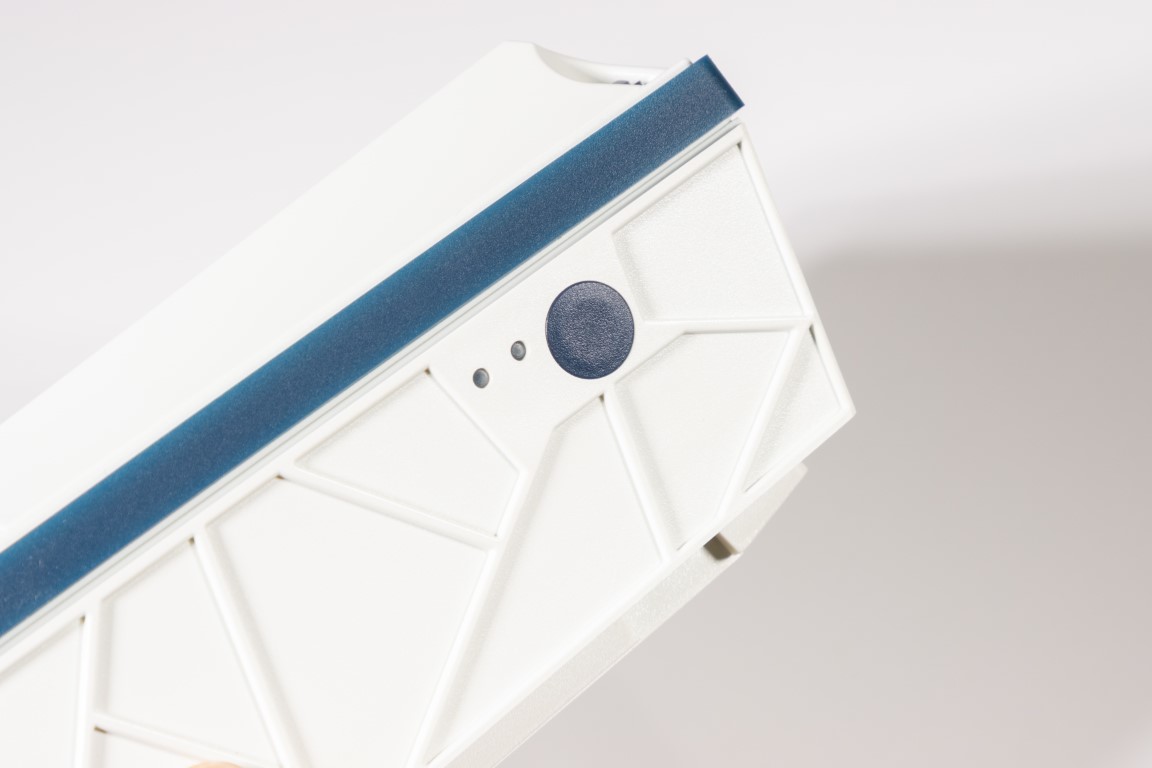
Use two jumper wires included in your M1 kit (colors might differ) to connect the BTN header to the Pi's power button input.

The BTN header is clearly marked, has no polarity, and is easy to connect.
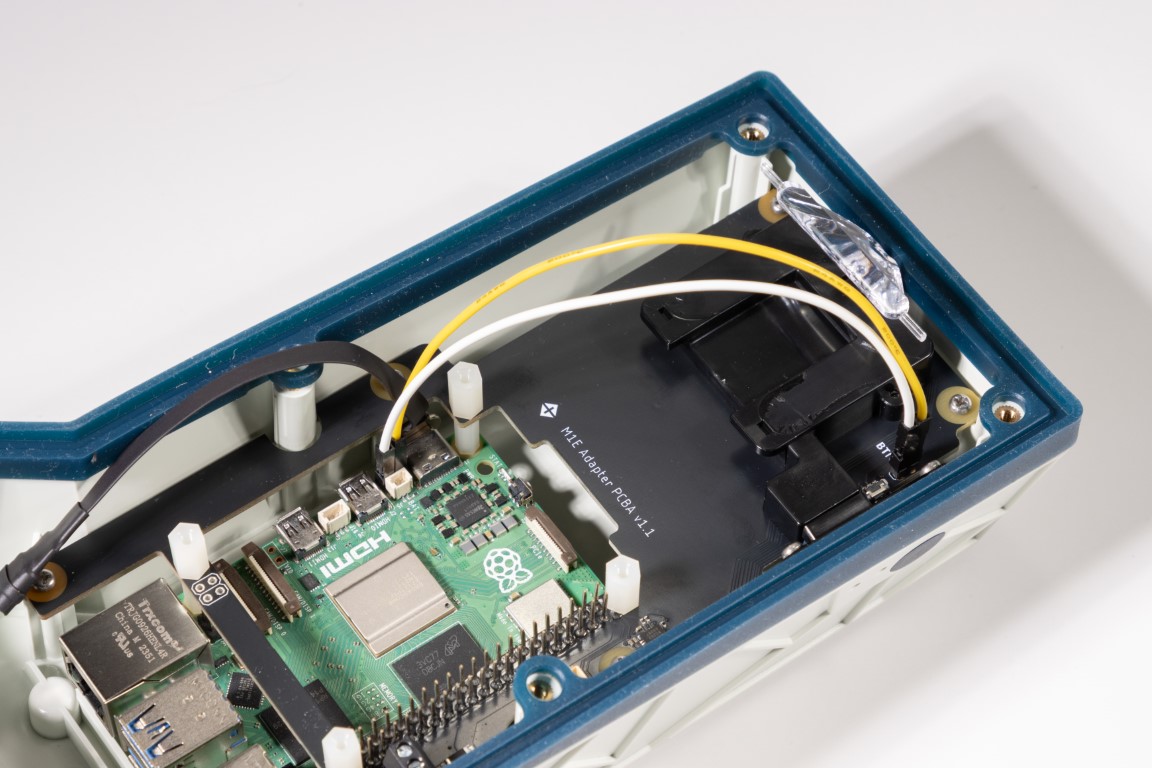
Just make sure to solder or secure the connections properly.
Want to know more about how to use this with your Pi? Check out the official Pi power button guide.
3. Qwiic Interface (a.k.a. STEMMA QT)
We love SparkFun's Qwiic and Adafruit’s STEMMA QT ecosystems—they make adding I²C peripherals painless.
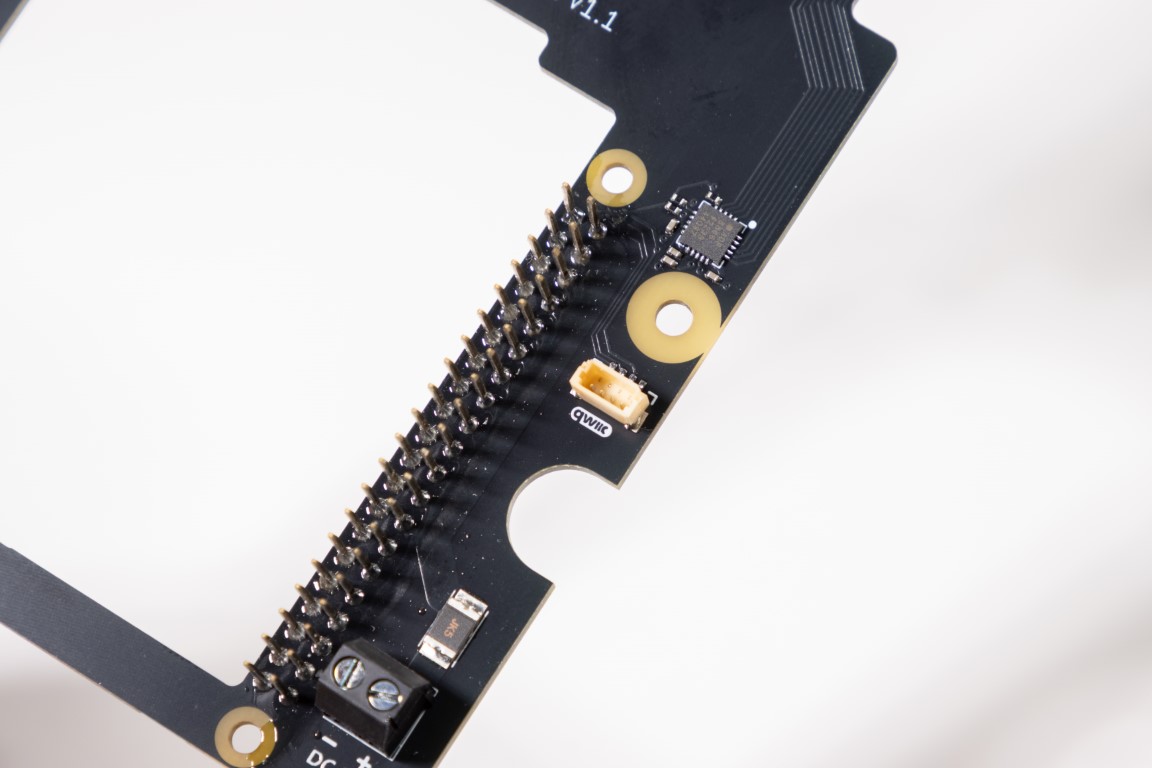
Just plug in compatible sensors, displays, or IMUs—no soldering required.
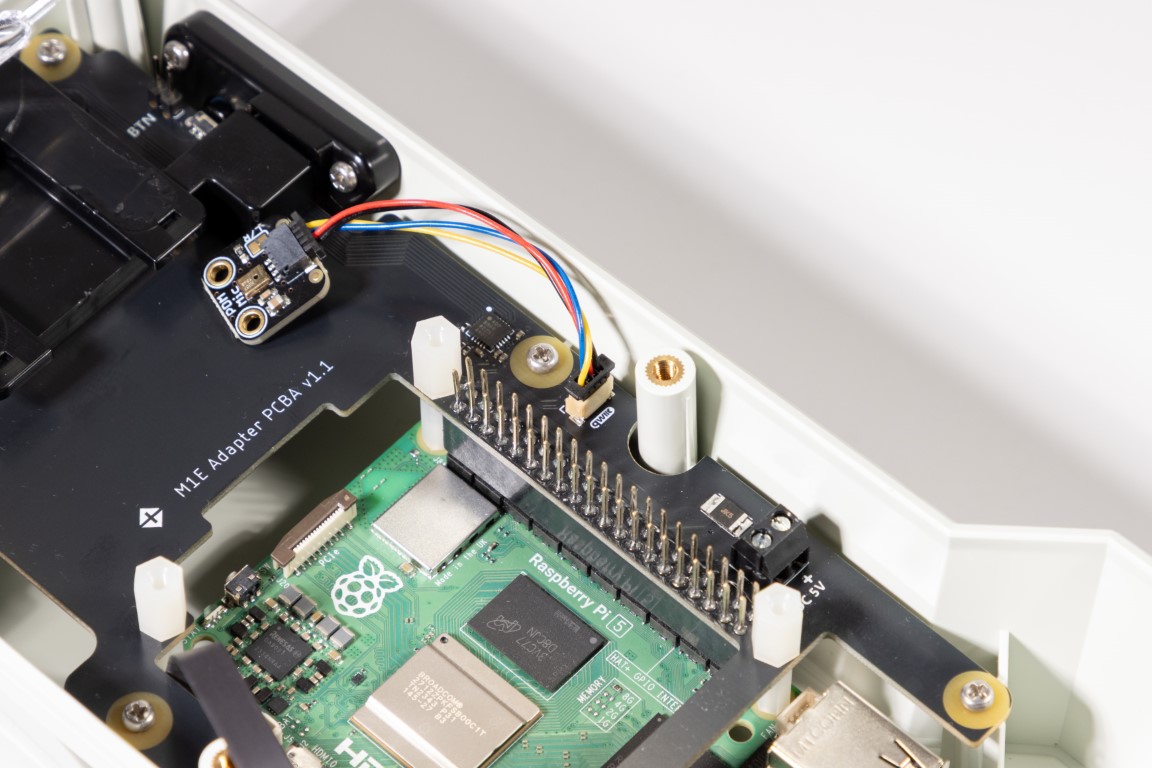
The Qwiic port is tied to pins 3 and 5 on the Pi’s header and runs at 3.3V logic.
🧱 Mounting the Enclosure
You’ll find detailed mounting patterns and mechanical specs in the datasheet.
Perfect for wall plates, custom brackets, or even pole mounts.
🔗 View Mounting Instructions →
📄 M1 Enclosure Datasheet
Need technical drawings, environmental ratings, or compliance info?
Check out the full M1 datasheet →
⚠️ Limitations
Here are a few things to keep in mind:
- Some bulky RJ45 ethernet plugs may not fit through the M20 glands—use low-profile versions or trim the strain relief.